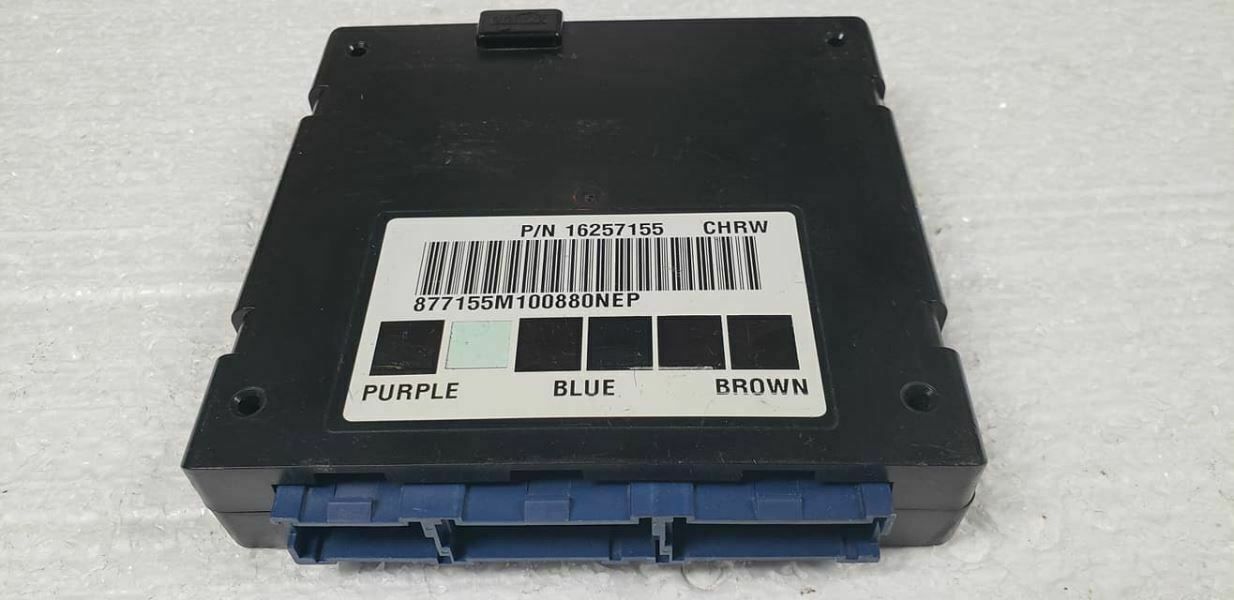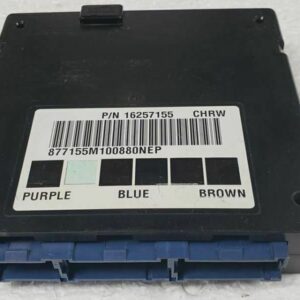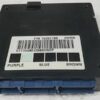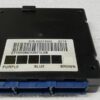Restore Your GM Truck’s Electrical System with a Reliable, Programmed BCM
Are you battling frustrating electrical gremlins in your 2000 GM SUV? Flickering lights, malfunctioning power windows or locks, a security system that acts up, or an engine that won’t start reliably are all classic signs of a failing Body Control Module. In my 20+ years as a technician, I’ve seen how a faulty BCM can turn a dependable truck into a source of constant headaches. This isn’t just an inconvenience; it’s a matter of reliability and safety. Stop chasing symptoms and replace the core of the problem with a dependable, VIN-programmed BCM.
This module arrives at your door ready to install. We handle the complex part for you: before shipping, our experts program the BCM with the latest GM software, specifically matched to your vehicle’s VIN. This critical step ensures all the electronic features your truck came with work correctly right out of the box, saving you from a costly and time-consuming trip to the dealership for programming. This is the most effective way to install a replacement 2000 Yukon BCM and get your truck back to 100%.
A Technician’s Notebook: The Ground Connection Mistake
I once had a 2000 Tahoe in my bay with all the tell-tale signs of a bad BCM—the owner had already replaced it twice with modules from a salvage yard, but the problems persisted. Before condemning his latest BCM, I did a full diagnostic. The issue wasn’t the module itself, but a corroded and loose ground wire connected near the BCM’s mounting bracket under the dash. These GMT800 platforms are notorious for it. A poor ground can mimic BCM failure perfectly. My Pro Tip: Before replacing your BCM, always check and clean the main ground connections under the driver’s side dash. It’s a 10-minute check that can save you hundreds of dollars.
Common Signs of a Failing BCM
If your vehicle is experiencing any of the following, a failing BCM is the likely culprit. Replacing your 2000 Yukon BCM can resolve these issues:
- ✔ Erratic or non-functional power windows, door locks, and mirrors.
- ✔ Interior dome lights or dashboard lights staying on or not working at all.
- ✔ The security system light flashing, preventing the engine from starting (PassLock issues).
- ✔ Horn honking unexpectedly or not working when pressed.
- ✔ Inconsistent operation of the radio or climate controls.
- ✔ False warning messages on the driver information center (DIC).
- ✔ Communication error codes, such as U-codes, when scanned with a diagnostic tool.
A Straightforward Guide to Your BCM Installation
Installing your new BCM is a manageable job for a confident DIYer. Follow these general steps to ensure a smooth process. Remember to always consult a factory service manual for instructions specific to your exact model.
- Safety First: Disconnect the negative terminal from your vehicle’s battery and wait at least 10 minutes to allow all modules to power down completely.
- Locate the BCM: On these GM trucks and SUVs, the Body Control Module is typically located under the driver’s side of the dashboard, often attached to a metal bracket to the left of the steering column.
- Remove Trim Panels: You will likely need to remove the lower dash knee bolster panel to gain access. This is usually held in by a few screws and clips.
- Disconnect and Remove: Carefully unplug the electrical connectors from the old BCM. They have locking tabs that must be depressed. Once disconnected, unbolt the module from its mounting bracket.
- Install the New BCM: Mount your new, pre-programmed BCM in the same location. Securely plug in all electrical connectors, ensuring they click into place.
- Reconnect and Test: Reinstall any trim panels you removed. Reconnect the negative battery terminal. Turn the key to the ‘ON’ position and test all body functions—windows, locks, lights, radio, etc.—to confirm proper operation.
Important Post-Installation Notes
In some cases, additional synchronization procedures may be required after installing the new BCM. These often require a professional bidirectional scan tool:
- Airbag System Sync: If the airbag warning light is illuminated after installation, a procedure called ‘Setup SDM Primary Key in BCM’ is needed to sync the airbag system with the new BCM.
- Brake Pedal Position Relearn: To ensure correct brake light and traction control operation, a brake pedal position sensor relearn might be necessary on certain models.
Verified Vehicle Compatibility
This BCM is a direct-fit replacement for models using part number ID 9377486. It is also a compatible replacement for part numbers 16257155, 15136876, and 09377486. Please verify the part number on your original module before ordering.
- 2000 Chevrolet Suburban 1500 (Body Control Module; LH dash, ID 9377486)
- 2000 Chevrolet Suburban 2500 (Body Control Module; LH dash, ID 9377486)
- 2000 Chevrolet Tahoe (Body Control Module; LH dash, ID 9377486)
- 2000 GMC Yukon (exc. Denali; Body Control Module; LH dash, ID 9377486)
- 2000 GMC Yukon XL 1500 (Body Control Module; LH dash, ID 9377486)
- 2000 GMC Yukon XL 2500 (Body Control Module; LH dash, ID 9377486)
Frequently Asked Questions About the 2000 Yukon BCM
Frequently Asked Questions
Do I really need to provide my VIN?
Yes, providing your VIN is essential. We use it to load the exact, correct software and configurations for your specific vehicle’s options. This step is what makes the module a plug-and-play solution and prevents a trip to the dealer.
Is this a simple plug-and-play installation?
For most vehicles, yes. Because we pre-program it, the physical installation is a direct swap. However, as noted, some vehicles may require an additional relearn procedure for the airbag or brake systems if a warning light appears after installation.
Do I need to return my old BCM?
No, there is no core charge for this part. You can keep your original module.
Will this fix my ‘Security’ light issue?
A faulty BCM is a very common cause of PassLock security system problems in these GM trucks. Replacing it with our correctly programmed module often resolves these no-start and security light issues.
What tools are needed for the post-install procedures?
The Airbag System Sync and Brake Pedal Position Relearn require a professional-grade bidirectional scan tool. Most basic code readers cannot perform these specific functions. If needed, these procedures must be done by a qualified mechanic or a well-equipped DIYer.



